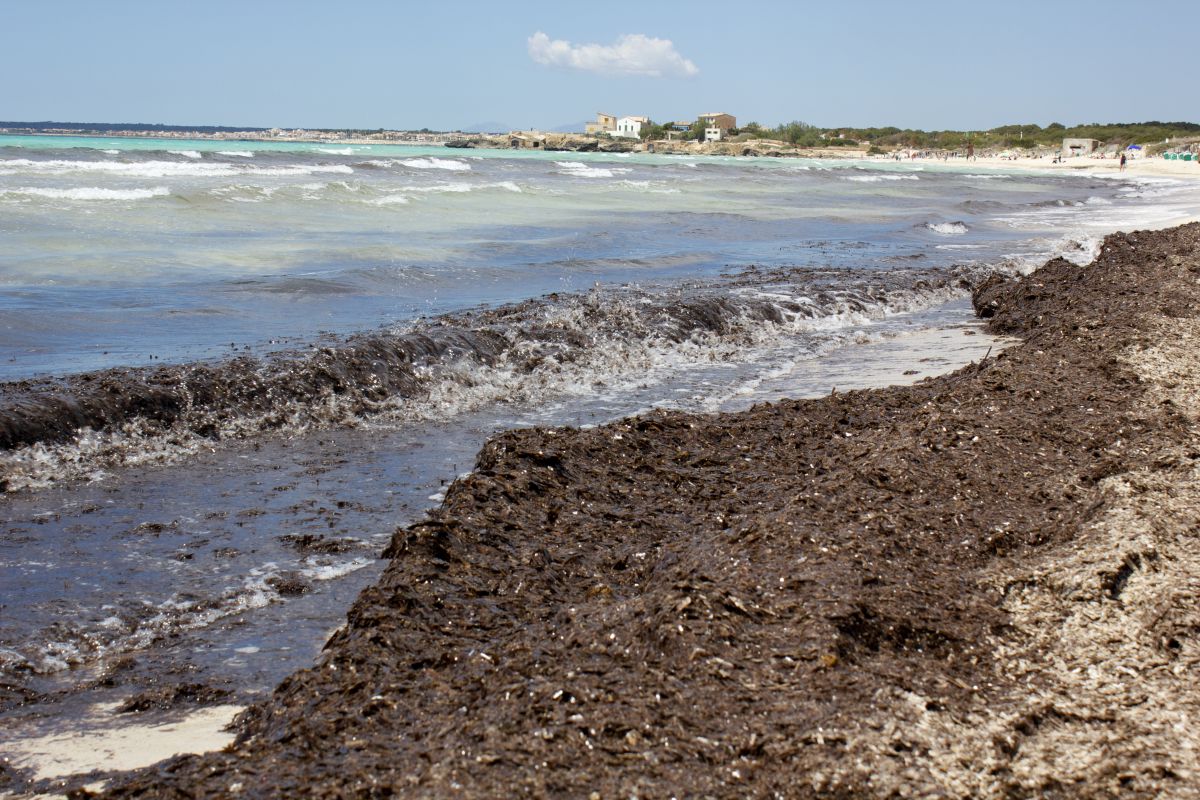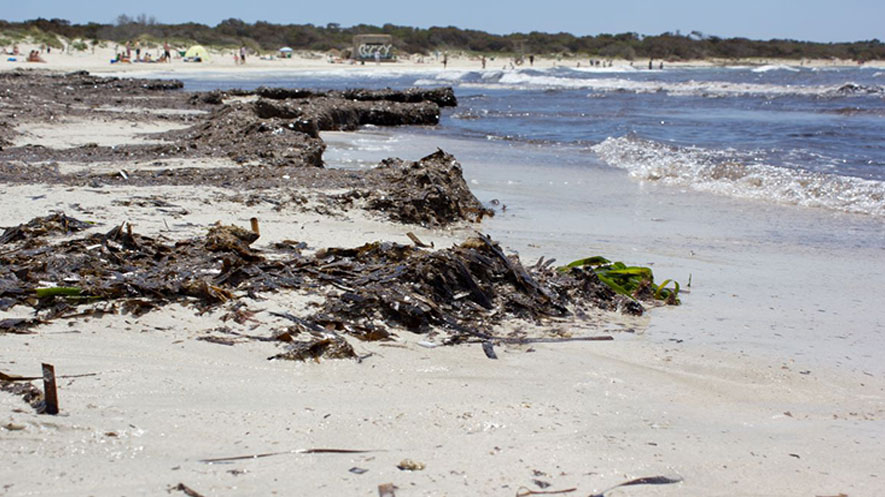In the summer 2017, a survey was completed in 144 Mediterranean towns in Spain, France, Italy, Greece, and Cyprus to discover the current practices and tools in beach management. It revealed that the removal of Posidonia deposits is a common practice on most Mediterranean beaches, driven by the aesthetic requirements of the tourism sector in the region.
Posidonia oceanica is a marine plant that forms extensive underwater meadows in the Mediterranean Sea. During winter storms, its leaves and roots are washed ashore and often form thick layers mixed with the sand, called banquettes. In spring and summer, however, these banquettes are often removed by local administrations in response to the high pressure from coastal tourism, despite protecting beaches from the erosion and playing a pivotal role in supporting vulnerable ecosystems – such as coastal dunes – that are protected by the European legislation.
 The survey was implemented in the framework of the Interreg Med project entitled ‘Posbemed’, which is focused on management, conflicts, and opportunities related to Posidonia banquettes on the beaches of the Mediterranean coast, particularly coastal protected areas and Natura 2000 habitats
The survey was implemented in the framework of the Interreg Med project entitled ‘Posbemed’, which is focused on management, conflicts, and opportunities related to Posidonia banquettes on the beaches of the Mediterranean coast, particularly coastal protected areas and Natura 2000 habitats
“Little is known about how beaches are managed and the consequences of certain practices, however, we know that the deposits formed from the seagrass Posidonia act as a shield that prevents the loss of sand from the beach, ensuring the resilience and the stability of the coastline. With the Interreg ‘Posbemed’ project, we aim to understand the current practices along Mediterranean European countries and enhance awareness of beach users and managers on the benefits of this natural capital by providing tools to improve management,” says Maria del Mar Otero, a marine expert from the IUCN Center for Mediterranean Cooperation.
Findings
As much as 83% of surveyed municipalities from these 5 countries remove the seagrass deposits every year, as well as banquettes on some or all of the beaches. In general, the banquettes are removed according to the needs and can reach up to more than 7,000 Tons per year in some administrations. The activity was found to occur 3 or more times per year in over half of the locations.
The survey found that heavy machinery such as excavators is the number one choice in around 40% of cases, same for light machinery such as beach cleaning screeners. This is despite the significant impact this type of equipment might have on the beaches and the associated coastal environment.
“We are trying to prove that seagrass leaves found on the beach are good and that they should be kept in place, because it helps to restore the sands, to fight coastal erosion, and to make beaches more alive,” says Maria Eugenia Giunta Fornasin, from Entente Interdépartementale de Démoustication Méditerranée (France).
Once the banquettes are removed, the disposal methods vary – 26% of the municipalities deposit them in a landfill, while for around 20% of locations, the leaves are used for other purposes or are disposed in the vicinity and returned at the end of the tourist season. Each of these strategies has a different impact.
“It is indeed true that beach users generally express mild to strong dislike of Posidonia banquettes, adversity that largely underlies the designation of destructive cleanup practices on sandy coasts. At the same time, however, respondents admit that public information on the ecological role of banquettes is insufficient, and consider that a green label signaling natural and undisturbed beaches could raise awareness and social acceptance of these important formations. ‘Posbemed’ is now looking into ways of disseminating such valuable information, in collaboration with the Blue Flag Network across the Mediterranean”, says Maria Salomidi, marine ecologist from the Hellenic Centre for Marine Research (Greece).
The results of the survey are helping the project team devise a strategy for more sustainable management of this valuable natural resource, and to provide practical recommendations and guidance for Mediterranean beach managers.
The project is led by the Entente Interdépartementale de Démoustication Méditerranée (EID-MED, France) and involves four other partners from the Mediterranean basin: the IUCN Centre for Mediterranean Cooperation (Spain), the IMC Foundation – International Marine Centre (Italy), ECO-logica srl (Italy) and the Hellenic Centre for Marine Research (HCMR, Greece).
The project has a 21-month duration and will be finalized in July 2018.

